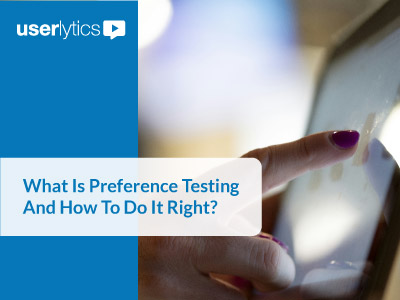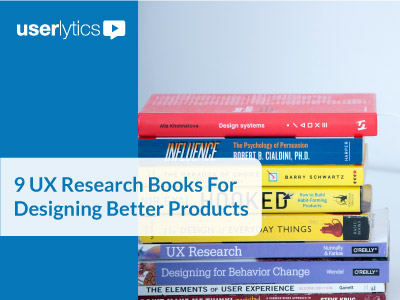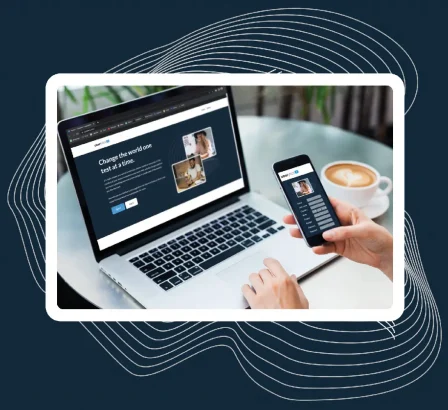Moderated Tests: UX platform VS Zoom
Are you thinking about doing some user testing on your website, app or prototype? Are you currently weighing up the different options available to you? Should you use a free video-conferencing tool or a paid user testing platform? What are the differences between these options? These are all valid questions that will be answered for you in this blog post, giving you some clarity on what tool is best suited for your user testing needs.

As the pandemic has unfolded, many things have been forced to go virtual, including connecting with people. As a result, more and more UX testing platforms and options have become available to brands looking to connect with their current and future customers. These options mainly fall into two cohorts: (1) Free video conferencing tools, and (2) paid specialist user testing platforms. Whether you will benefit from a paid UX testing platform depends on your objectives, the scale and speed at which you want your study completed, and your desired output from the study.
Below, we’ll go over each of these factors, and determine why using a remote UX testing tool offers more benefits than using video conferencing tools like Zoom.
1. Objectives of your study:
Getting stakeholders to buy-in on an idea/concept
A common UX testing objective is to come up with a great product solution that your stakeholders will buy into. However, oftentimes, your team members will have different opinions on how to best solve a product issue. In these instances, having your teammates listen in while a UX study is taking place is a great way for them to hear firsthand what your target customer’s pain points are.
One benefit of using a user testing platform like Userlytics is that it permits invisible’” observers on moderated tests that cannot be seen or heard by test participants. This is important as it means teammates can gain valuable customer insights they might not otherwise get if the test participant could see and hear them.
A private team chat box can also be used by these “invisible” observers to share participant question ideas with the moderator. This feature ensures that you can get what you need out of a moderated UX study as the conversation evolves without having to schedule a follow-up session.
Quantitative data
Although conversational feedback is a great way to gain insights during a UX study, sometimes, words alone aren’t enough. If quantitative data is important to you, using a UX research platform might be best for your needs.
Remote UX research platforms contain various native UX exercises and tools to help brands gain the quantitative insights they need. By conducting studies via a UX research platform, you can take advantage of tools like card sorting, tree testing, and survey questions, and more during your test session. These can help prioritize ideas that are discussed during the conversation, enabling you to also add some data points to your insights.

2. Scale and speed of your study:
Recruitment of participants
Your insights are only as good as the person providing them. If you don’t have a group of willing participants that fit your criteria on standby ready to talk to you, you are not alone. Finding people to take part in your UX study and ensuring a diverse representation of both demographics and psychographics requires a large pool of users to be able to select from.
User testing platforms have an already established database of respondents to select from. For example, the Userlytics database spans over 150 countries and is 1,200,000 participants large, with more than 15 languages spoken by participants. So whatever your requirements are, they can almost always be found in such databases. And if your target audience is extremely specific, Userlytics can personally recruit the perfect participants for your test.
Furthermore, recruiting users from an already established user base means that these people are familiar with how user testing works and what is required of them, so there is no time wasted on explaining how the session and/or platform works.
Organization of interviews
Oftentimes, the time and effort it takes to organize a user testing study is underestimated. The size of your study will also dictate how much effort is needed in the preparation stages of your UX study. Contacting participants, scheduling sessions, reminding participants of their session times, allocating participant incentives, determining how to deal with participant no-shows… The list of organizational priorities goes on. If your study requires more than a handful of users the organization of it can end up taking just as much time as the actual study sessions themselves.
Remote UX testing platforms allow for easy date/time scheduling with participants. For example, Userlytics’ has an easy scheduling calendar for moderated sessions that enables you to quickly schedule a meeting time that suits both you and the participant. This precise scheduling, accompanied by email reminders and incentives sent out via the platform, decreases the likelihood of no-shows, which can be very time consuming and frustrating for all involved. Lastly, because UX research platforms are made specifically for moderated testing, they typically result in fewer system crashes and disruptions during remote tests. And if an issue does occur, there is often a team on standby to help you resolve the issue as soon as possible.

3. The desired output of your study:
Making an impact with your insights
A key benefit of user testing platforms is their ability to record conversations. According to Forbes, viewers retain 95% of a message when they watch it on a video compared to 10% when reading it in a text. So presenting your findings using a combination of video and text can create an impactful report that will leave a lasting impression on the recipients.
To make your study metrics more impactful, Userlytics offers time-stamped notes that can be quickly converted to highlight reels, which are short video clips of key moments within your studies. These videos can be exported and embedded in any reporting materials you send to teammates and stakeholders.
Easily quoting the user’s words
Remaining impartial and excluding any bias when reporting your insights is vital to any good piece of research. While you may be able to record remote testing sessions on a tool like Zoom, compiling quotes from your test participants may be a tedious process that requires you to rewatch the session several times.
Using a remote UX testing platform can save you a lot of time in this area. Many remote testing platforms like Userlytics offer automated transcriptions of your test sessions. With this tool, you can easily pull key quotes from your sessions and present them in your reports.
In Conclusion
While many brands can successfully complete remote UX studies via Zoom, using a specialist user testing platform offers customised tools that can elevate your study sessions and provide you with better, more tangible insights. Whether you should use a free tool or a specialist user testing platform depends on what you want to achieve, how quickly you want to achieve it and how you want to present your insights back to your teammates and stakeholders.
Some of the major benefits of using a remote UX testing platform like Userlytics are access to a global panel of test participants that can be filtered to match your target customer, native quantitative testing metrics, and easy reporting tools like automated AI transcriptions and highlight reels. By using these tools, you can elevate your UX testing and draw even better insights to improve your customer experience. Schedule a free Userlytics demo to see how its moderated testing platform can help your business conduct better remote usability tests.

Interested in UX Testing?
Data Visualizations
About the Author: Elise Rodriguez

Elise is the Editor of Content and Communications at Userlytics. Prior to joining Userlytics’ content team, Elise worked in the public relations field, and helped develop communications materials for companies in a variety of industries, including health and beauty, travel / transportation, and sports / entertainment. Elise has her BS in public relations, and her Master’s degree in business management. When Elise isn’t writing about new product features at Userlytics, she enjoys singing and making music, yoga, and spending time at home with her two cats.
Read More Articles by EliseModerated Tests: UX platform VS Zoom, Moderated Tests: UX platform VS Zoom. Moderated Tests: UX platform VS Zoom.




